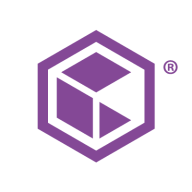

Commvault Cloud and NetApp SnapCenter compete in the data management and backup industry. Commvault Cloud excels in support and pricing, whereas NetApp SnapCenter shines with its robust features.
Features: Commvault Cloud offers comprehensive backup solutions, scalability, and integration with various cloud platforms. NetApp SnapCenter provides efficient snapshot technology, application integration, and strong overall performance.
Room for Improvement: Commvault Cloud faces challenges with complex initial setup and slow performance during high-demand operations. NetApp SnapCenter needs improvements in reporting capabilities and bug frequency.
Ease of Deployment and Customer Service: Commvault Cloud's deployment is intricate but backed by responsive customer service. NetApp SnapCenter is easier to deploy but its customer service is less proactive.
Pricing and ROI: Commvault Cloud provides more value with lower setup costs and satisfactory ROI. NetApp SnapCenter is more expensive but offers higher ROI due to superior performance features.
| Product | Market Share (%) |
|---|---|
| Commvault Cloud | 6.0% |
| NetApp SnapCenter | 0.7% |
| Other | 93.3% |


| Company Size | Count |
|---|---|
| Small Business | 57 |
| Midsize Enterprise | 24 |
| Large Enterprise | 81 |
| Company Size | Count |
|---|---|
| Small Business | 8 |
| Midsize Enterprise | 9 |
| Large Enterprise | 11 |
Commvault Cloud is the ultimate cyber resilience platform built to meet the demands of the hybrid
enterprise. Beyond its core functionality of data backup and recovery across diverse workloads, including applications, databases, virtual machines, and files, Commvault Cloud stands out as a robust defense against ransomware. Going beyond backup, the platform integrates advanced data security features such as encryption, access control, and threat detection, safeguarding against unauthorized access and cyber threats.
With tools for data management, classification, and migration, businesses can optimize storage costs, enhance accessibility, and comply with regulations seamlessly. Boasting cloud integration with major providers like AWS, Azure, and Google Cloud, Commvault Cloud leverages the scalability and flexibility of the cloud for comprehensive data protection and management. The platform's automation capabilities streamline tasks, and its reporting and analytics features provide valuable insights into data usage, potential risks, and optimization strategies. Commvault Cloud is not just a security tool; it is a key component of cyber resilience, enabling organizations to not only protect against cyberattacks but also recover swiftly and minimize the impact of incidents. Elevate your cyber resilience strategy with Commvault Cloud.
Unified, scalable platform for application-consistent data protection and clone management. This software simplifies backup, restore, and clone lifecycle management with application-integrated workflows.
We monitor all Backup and Recovery reviews to prevent fraudulent reviews and keep review quality high. We do not post reviews by company employees or direct competitors. We validate each review for authenticity via cross-reference with LinkedIn, and personal follow-up with the reviewer when necessary.